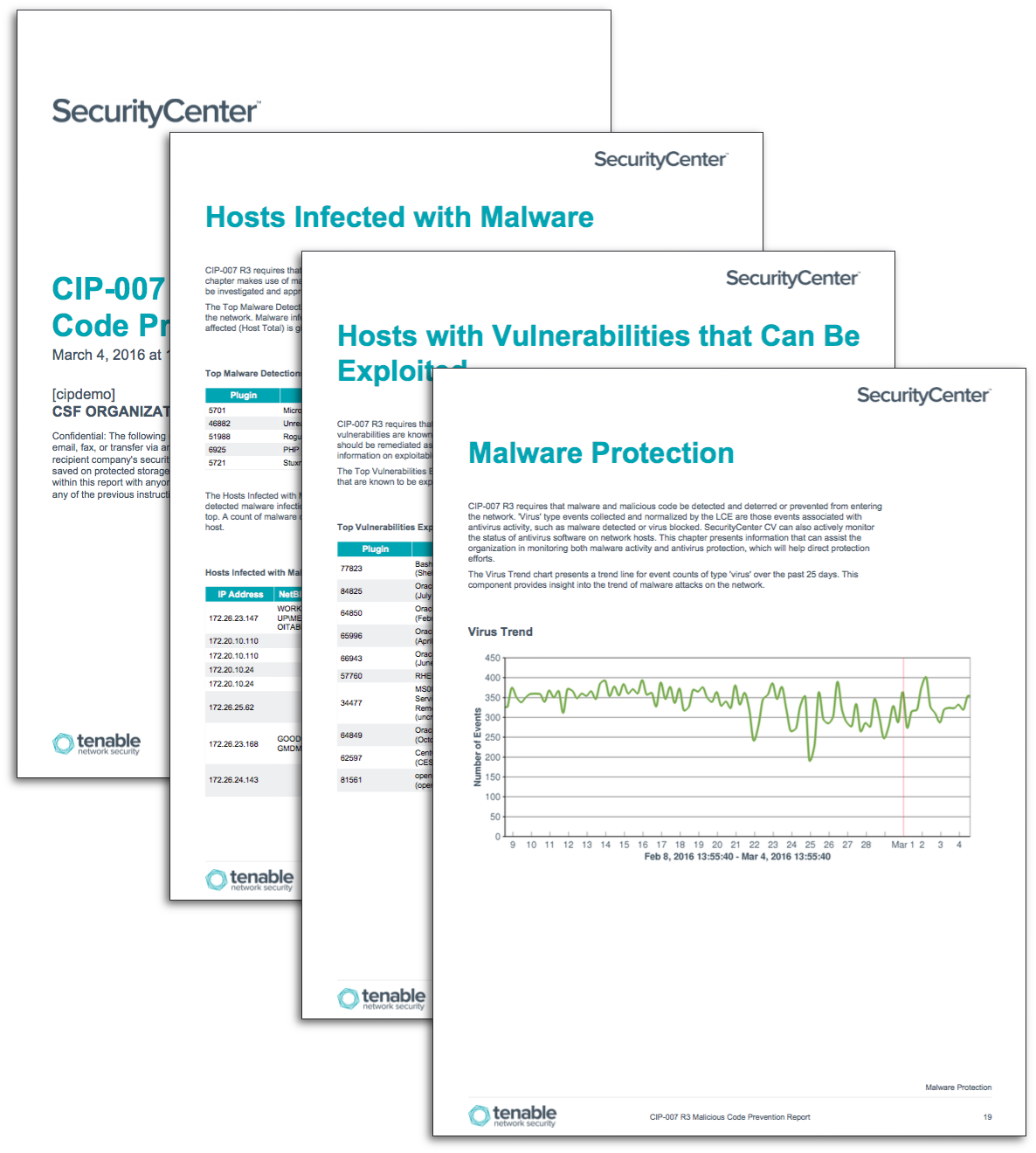by David Schwalenberg
March 23, 2016

The North American Electric Reliability Corporation (NERC) is a not-for-profit international regulatory authority whose mission is to assure the reliability of the bulk power system in North America. NERC Reliability Standards define the reliability requirements for planning and operating the North American bulk power system, which serves more than 334 million people. NERC is committed to protecting the bulk power system against cyber security compromises that could lead to misoperation or instability. The NERC Critical Infrastructure Protection (CIP) Standards provide a cyber security framework for the identification and protection of Bulk Electric System (BES) Cyber Systems, to support the reliable operation of the North American bulk power system.
The purpose of CIP-007 R3 (Malicious Code Prevention) is to "deter, detect, or prevent malicious code" and "mitigate the threat of detected malicious code". Malware and viruses are a major threat and Supervisory Control and Data Acquisition (SCADA) systems are not immune. New malware is identified daily and virus writers are constantly tweaking their malware to keep it from being detected. Using malicious code, potentially massive attacks can be accomplished with relative ease, negatively impacting the reliable operation of the BES. Network defenders need to use a defense-in-depth approach to both protect against malware infections and also discover and address any malware that gets through the defenses.
For organizations that are required to be CIP compliant, Tenable.sc Continuous View (CV) can lead the way to compliance. This report can assist in identifying malware already on the network, and viewing events such as virus detections and interactions with known hostile IP addresses that may indicate the presence of malware. The Log Correlation Engine (LCE) is constantly updated with lists of IP addresses and URLs associated with known botnets; as the LCE processes logs, it alerts if one of these hostile IP addresses or URLs is seen. The top IP addresses on the network associated with virus detection events are also displayed, as well as the users most associated with virus events. This enables an analyst to determine on which hosts malware is found and which users may be engaging in activity that exposes the network to viruses; knowing this information can assist in improving network defenses. The report presents hosts with malware-related activity and concerns, and also presents the current antivirus status, including the percentage of hosts on which the installed antivirus is not working properly. This report can assist in monitoring both malware activity and antivirus protection across the network, which will aid in meeting the CIP-007 R3 requirements and measures. If desired, more detailed information can be obtained through analysis within Tenable.sc CV.
The CIP standards recommend categorizing BES Cyber Assets into different impact categories. An asset's impact category is based on the adverse impact to BES reliability that would occur if the asset was unavailable, degraded, or misused. Once the impact categories of systems have been determined, asset groups in Tenable.sc CV can be used to group together machines in each impact category. Asset groups can then be applied to this report to narrow the focus and enable more accurate reporting on systems in specific impact categories. Using assets with reports is very similar to using assets with dashboards; for more information, see How to Add Assets in SecurityCenter and How to Use Assets with Dashboards. Alternatively, if the assets are in separate subnets, then subnet filters can be easily applied to narrow the focus of this report.
This report is available in the Tenable.sc Feed, a comprehensive collection of dashboards, reports, Assurance Report Cards, and assets. The report can be easily located in the Tenable.sc Feed under the category Compliance. The report requirements are:
- SecurityCenter 5.2.0
- Nessus 8.4.0
- NNM 5.8.1
- LCE 6.0.0
Tenable.sc Continuous View (CV) is the market-defining continuous network monitoring solution. For Supervisory Control and Data Acquisition (SCADA) systems, where reliability and not interfering with normal operations is a concern, Tenable.sc CV includes passive vulnerability detection with the Nessus Network Monitor (NNM), as well as log correlation with the Log Correlation Engine (LCE). Where possible, active vulnerability detection and compliance scanning with Nessus can also be done. Using Tenable.sc CV, an organization will obtain the most comprehensive and integrated view of its SCADA network.
Chapters
Executive Summary - CIP-007 R3 requires that malware and malicious code be detected and deterred or prevented from entering the network. Malicious code that does get on the network should be remediated. This chapter presents a high-level overview of potential malware on the network and the malware protection status of the network.
Hosts Infected with Malware - CIP-007 R3 requires that malware and malicious code be detected and remediated on the network. This chapter makes use of many different methods to identify potentially compromised hosts.
Hosts with Vulnerabilities that Can Be Exploited - CIP-007 R3 requires that malware and malicious code be deterred or prevented from entering the network. Certain vulnerabilities are known to be exploitable by malware and exploit frameworks. This chapter presents information on exploitable vulnerabilities, which will help direct protection efforts.
Malware Protection - CIP-007 R3 requires that malware and malicious code be detected and deterred or prevented from entering the network. This chapter presents information that can assist the organization in monitoring both malware activity and antivirus protection, which will help direct protection efforts.